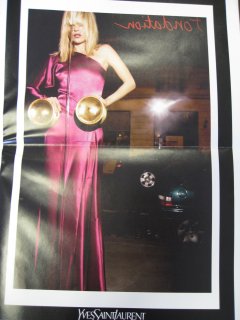OK, I'll take a shot.
"Le Smoking" does not just refer to a woman's tuxedo suit. Its first incarnation in 1966 was indeed a woman's tuxedo suit, but it has taken on the guise of a blue-gray jumpsuit, a tuxedo dress, velvet knickerbockers, a toreador's outfit, and so on. You can look at earlier posts in this thread to see photos of all the Smokings. There was also an exhibit called "Smoking Forever," which you can find at ysl-hautecouture.com.
One "Smoking" outfit was designed every season for the YSL haute couture collection, but "Le Smoking" is more of a concept than an actual garment. It's meant to bridge masculine and feminine clothing, giving women access to the freedom and options of men.
There is a famous 1968 story of Nan Kempner being denied service at the La Cote Basque restaurant for wearing the first Le Smoking (trousers were not considered proper dinner attire for a lady back then). Upon hearing this, she promptly dropped her pants and dined wearing only the tuxedo jacket cum mini-dress.
*****
"Rive Gauche" refers to the "Left Bank" of the Seine River in Paris. Historically, the Left Bank—which includes boulevards Saint-Germaine and Saint-Michel, as well as the Latin Quarter—was home to artists, writers, eccentrics, students, etc. (Picasso, Matisse, Hemingway, Sartre, Camus, de Beauvoir).
On the other hand, the "Rive Droite" was the stomping ground of the privileged (Champs Elysees, Place Vendome, etc.).
YSL Rive Gauche is the name of YSL's ready-to-wear line, launched in 1966. There was already a trend toward youth as purveyors of fashion (brought on by the successes of fashion designers in London). Two years later, Paris had its famous student riots, which cemented society and haute couture as passe. YSL rode this wave by capitalizing on the "Rive Gauche" name and identity.
So, the Rive Gauche/Rive Droite distinction is geographical, socio-economic, and aesthetic. And it was not just in fashion, but also fields like film, when Left Bankers (Alain Resnais, Chris Marker, and Agnes Varda) were distinguished from the Right-Bank faction (Jean-Luc Godard, Truffaut, and the rest of the Cahiers du Cinema).
Hope this answers your questions.


 , here what Stefano Pilati said about Yves from an interview with Tthe UK Times:
, here what Stefano Pilati said about Yves from an interview with Tthe UK Times:



















